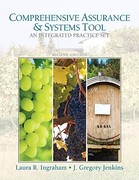Question
Case#2: K-Corp. was a supermarket chain store which had market presence over the country. It divided the markets into four segments, namely, general merchandise, foods,
Case#2:
K-Corp. was a supermarket chain store which had market presence over the country. It divided the markets into four segments, namely, general merchandise, foods, upmarket, and convenience, separated by different brands. Merchandise segment was the traditional supermarket which covered merchandized and daily products for the mass market. Upmarket concentrated on consumers who could afford more expensive, imported good quality items. This segment could usually obtain a higher margin. Foods were food specialty store which were located around railway stations, main bus terminals, or office districts for busy passerby who wanted to have a quick purchase on cooked foods or daily products. Convenience segment is the convenience store (such as 7-11) for small value and small quantity purchase. K-Corp. had identified eight rivals and wanted to do interfirm analysis to evaluate its strategic position relative to its rivals in the face of increasing market competition. Table 5.1 in the following provides information on the year 2016 sale for K-Corp. and its eight rival firms. Unrelated market segment means business outside the scope of interest of study for K-Corp (Table 12.4).
K-Corp. believed that asset backing was a key resource capability factor for the businesses as scale of operations and financial strength were critical success factor for building strong brands for consumers, enjoying economy of scales, and bargaining attractive trade terms from suppliers. K-Corp. also solicited information on each rival's returns on sale (ROS) for business profitability benchmarking comparison. Such information was collected from their annual reports and trade information update. This additional information was summarized in Table 12.5 below.


Step by Step Solution
There are 3 Steps involved in it
Step: 1

Get Instant Access to Expert-Tailored Solutions
See step-by-step solutions with expert insights and AI powered tools for academic success
Step: 2

Step: 3

Ace Your Homework with AI
Get the answers you need in no time with our AI-driven, step-by-step assistance
Get Started


